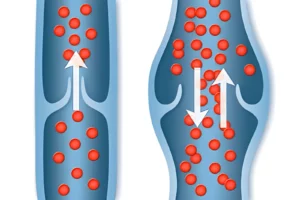According to epidemiological studies, more than 80 percent of adults suffer from small varicose veins called spider veins. Up to 30 percent suffer from large varicose veins, also known as varicose trunks. The first damage can occur as early as the age of 20, with the frequency of the disease increasing with age. The superficial venous system, which runs in the fatty tissue under the skin, is particularly affected. This is because the muscles that surround the deep vein system as a so-called muscle pump lack strength here.
Not only genetic
There are many causes of venous insufficiency. In most cases, however, they are based on a hereditary weakness of the connective tissue and vein walls. The predisposition to varicose veins is therefore primarily genetic. More rarely, it is the secondary consequence of thrombosis. A lack of exercise, being overweight and standing or sedentary jobs also contribute to vein problems. At the same time, the number of venous valves decreases to around 20 percent of the original number by the age of 70. This physiological loss ensures that the function of the veins gradually deteriorates.
More women than men
According to statistics, women between the ages of 30 and 50 suffer from varicose veins up to 3 times more often than men. This is mainly due to pregnancy. Under the influence of hormones, the muscle and connective tissue loosens to prepare the body for childbirth. This often results in a weakness of the connective tissue in the veins. In addition, the enlarging uterus and the weight of the baby make it even more difficult for blood to drain from the legs. Overall, the tendency for the vein walls to give way increases with every pregnancy.
Action brings healing
If you suffer from varicose veins, you no longer have to hide your legs. The days when venous diseases could only be treated in winter and at great expense are over. Today, there are minimally invasive therapies such as microfoam sclerotherapy and radiofrequency ablation, which can bring about rapid healing in a gentle way, even in summer temperatures.
Continue reading: Varicose veins: More than just a cosmetic problem






